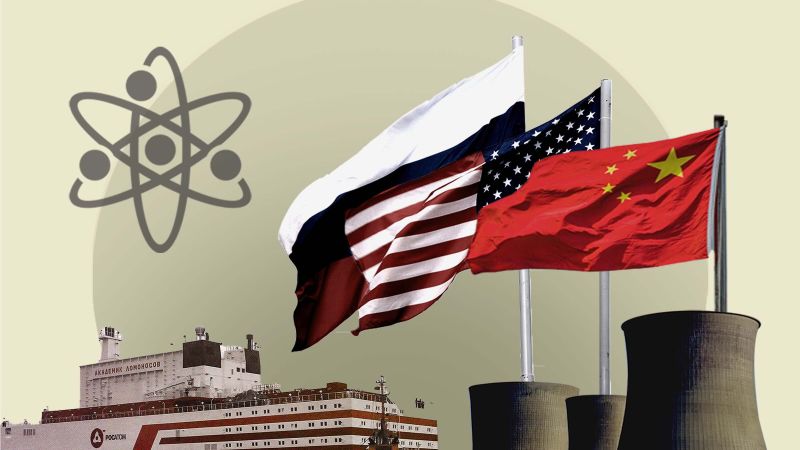Off the Siberian coast, not far from Alaska, a Russian ship has been docked at port for four years. The Akademik Lomonosov, the world’s first floating nuclear power plant, sends energy to around 200,000 people on land using next-wave nuclear technology: small modular reactors.
This technology is also being used below sea level. Dozens of US submarines lurking in the depths of the world’s oceans are propelled by SMRs, as the compact reactors are known.
SMRs — which are smaller and less costly to build than traditional, large-scale reactors — are fast becoming the next great hope for a nuclear renaissance as the world scrambles to cut fossil fuels. And the US, Russia and China are battling for dominance to build and sell them.



One of the less widely discussed issues with nuclear is that the bigger plants are all somewhat unique in their engineering particulars, which makes it more costly to maintain them. SMRs can be more readily standardised, which is expected to improve their economics as well as their cost to maintain.
If I’m not mistaken SMRs also handle power demand shifts better and don’t have to just do a base load. Something very useful with the growth of renewables and how they are not always supplying power.
Renewables being unable to do base load is just a myth that has been debunked countless times.
I’ve love for just one of the people anonymously downvoting to chime in. What you wrote is completely accurate but every nuclear-themed post here and on Reddit is downvoted without anyone putting forward a counter-argument.
Surely there wouldn’t any astroturfing be going on here, would there?
I don’t think it’s astroturfing, it’s just cognitive dissonance. Lots of people were raised thinking that nuclear power was the future and they can’t let go of that. That’s why they downvote without commenting - there’s no factual case for new nuclear and that goes double for SMRs.
there absolutely is. It’s a good transitional source of power that we currently understand very well, and know how to manage, but simply cannot build. It would be a very prudent way of ensuring some “insurance” time before fusion starts being even remotely viable.
Although i don’t think SMRs are the correct answer here.
Not with the design and build times new nuclear has. It can take 10-15 years to build a plant, and during that time costs will usually spiral and schedules will slip. At the same time, renewables and storage will have gotten even more competitive.
this is true, but nuclear plants are slated to run for 30-50 years. France has been running their existing fleet to 50 years with maintenance extensions.
There was a recent plant vogtle, i believe, that was finished. Although if im not mistaken i think they just stopped midway through that one, it is up and running right now though last i checked, maybe not generating power yet but definitely running.
I’m guessing you’re referring to the flammanvile reactor project in france? If so thats an EPR design, which are horrendously complicated, and the vast majority of the issues present in the construction are the inability to pour concrete correctly, and the inability to weld correctly. Which is something that happens after 30 years of not building any nuclear plants. We quite literally just have to build more if we want to be able to use it.
It’s true that renewables are more competitive, but solar requires significant power storage figures, which can be problematic at best. Or require other production methods to take up the slack. Wind is quite good, but has the significant problem of waste. Turbine blades are a huge mess. That’s mostly due to industry pressure to make it profitable, and the push for it to succeed, which nuclear hasn’t seen. Nuclear just needs the same thing.